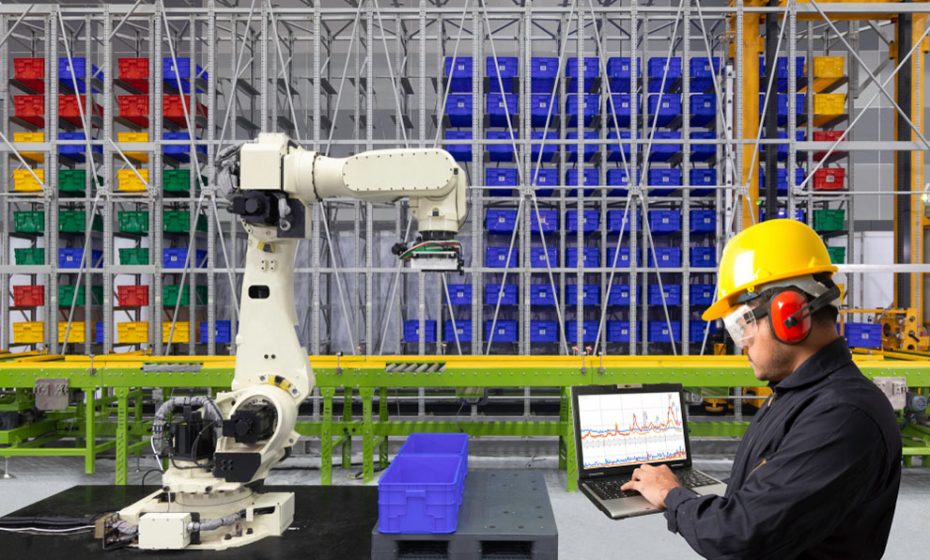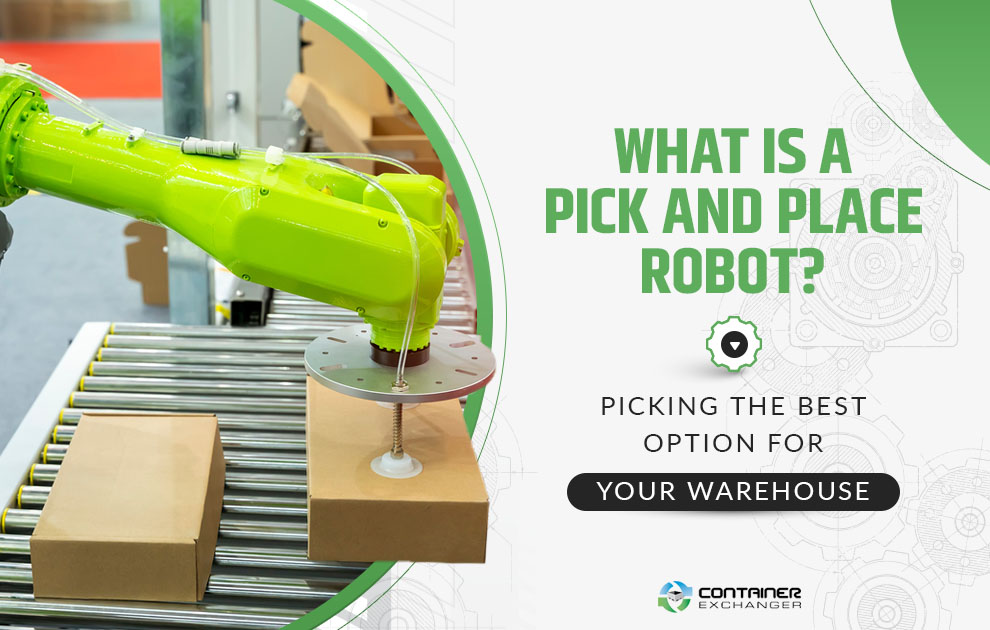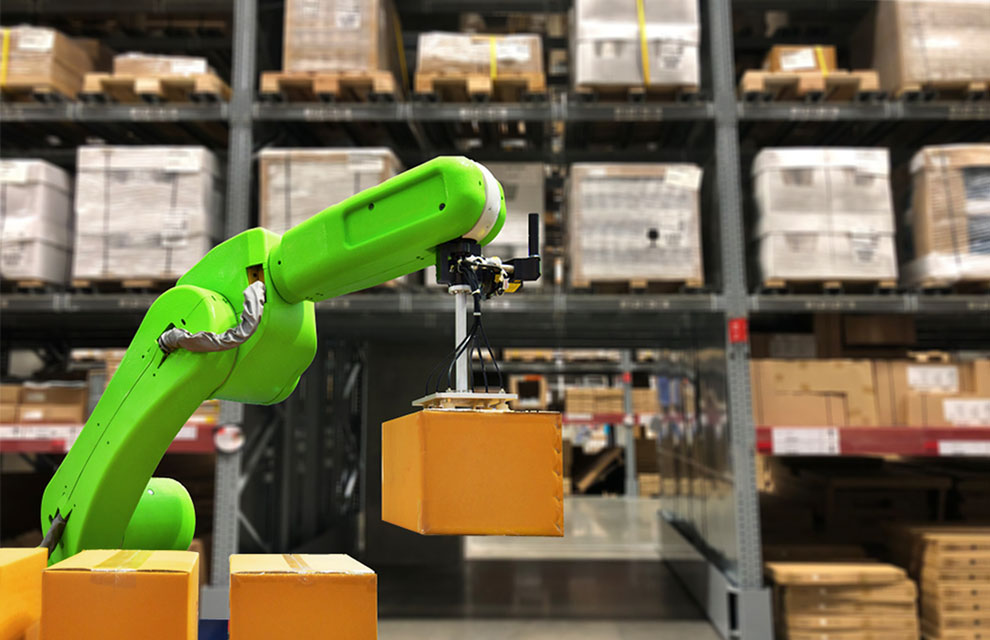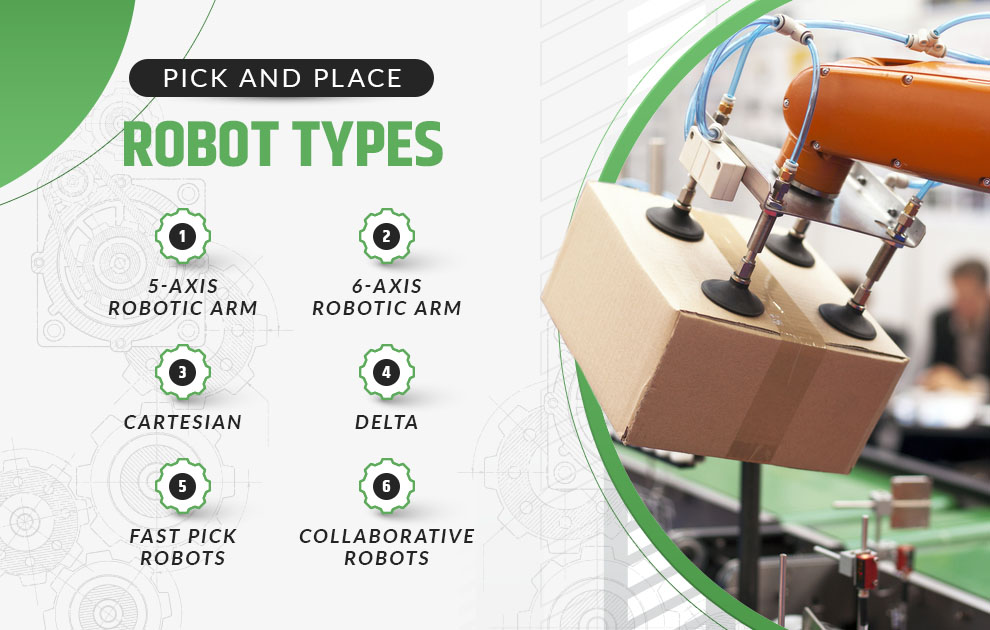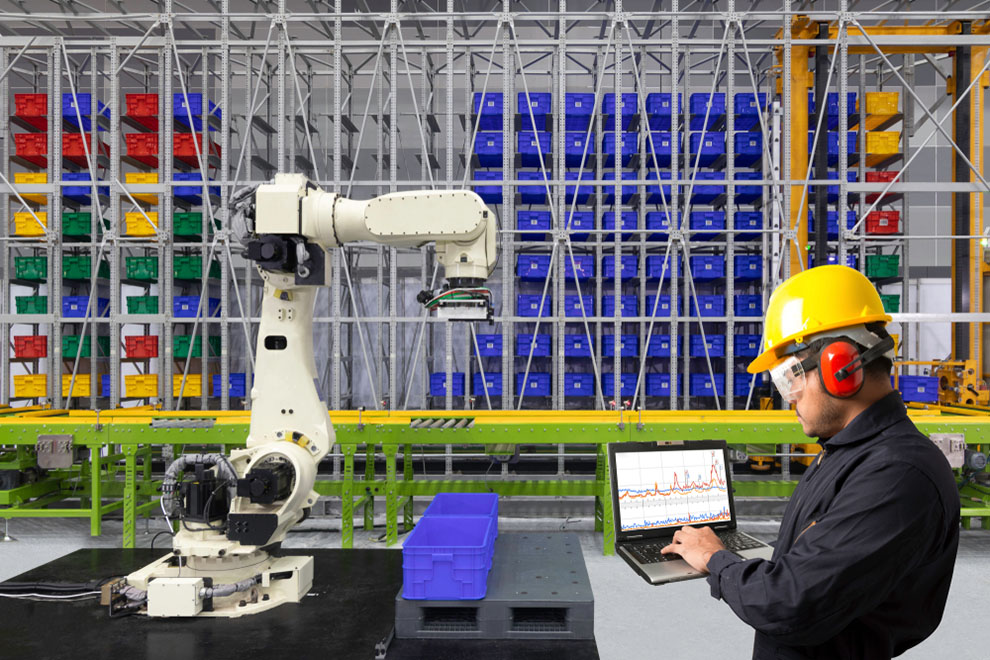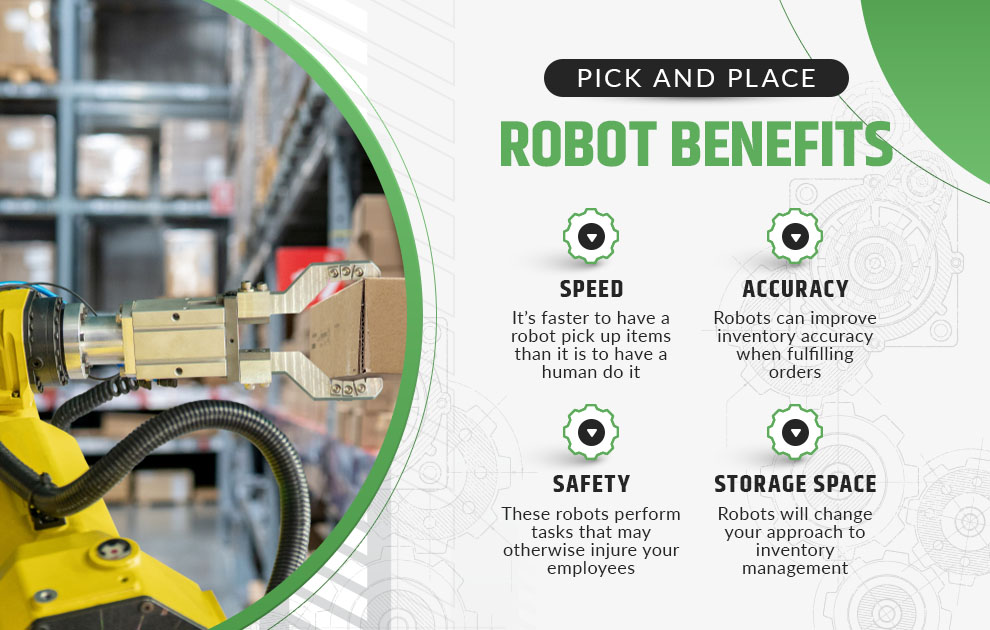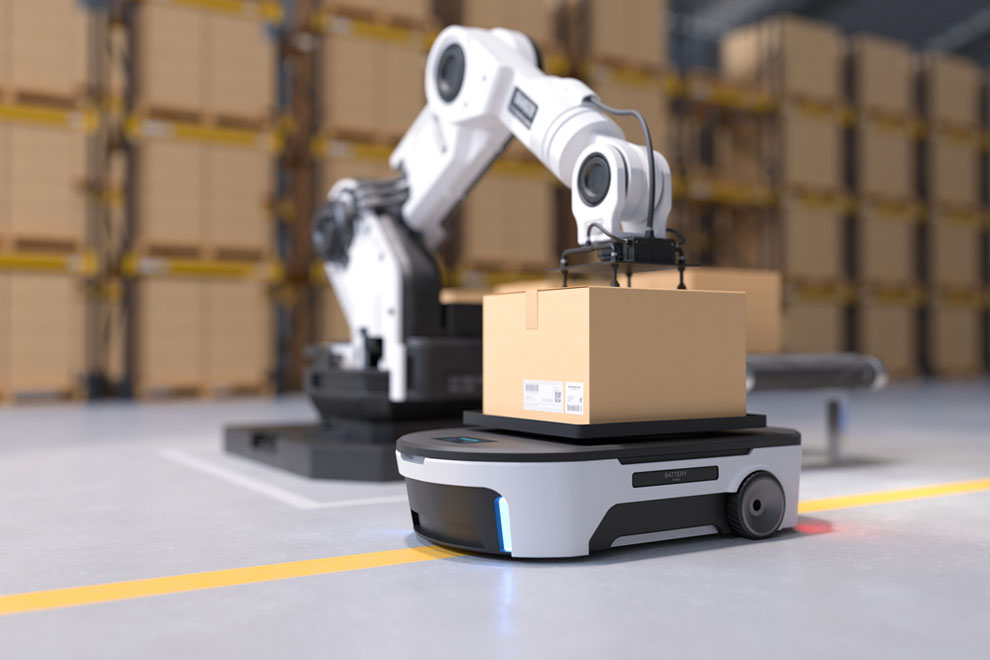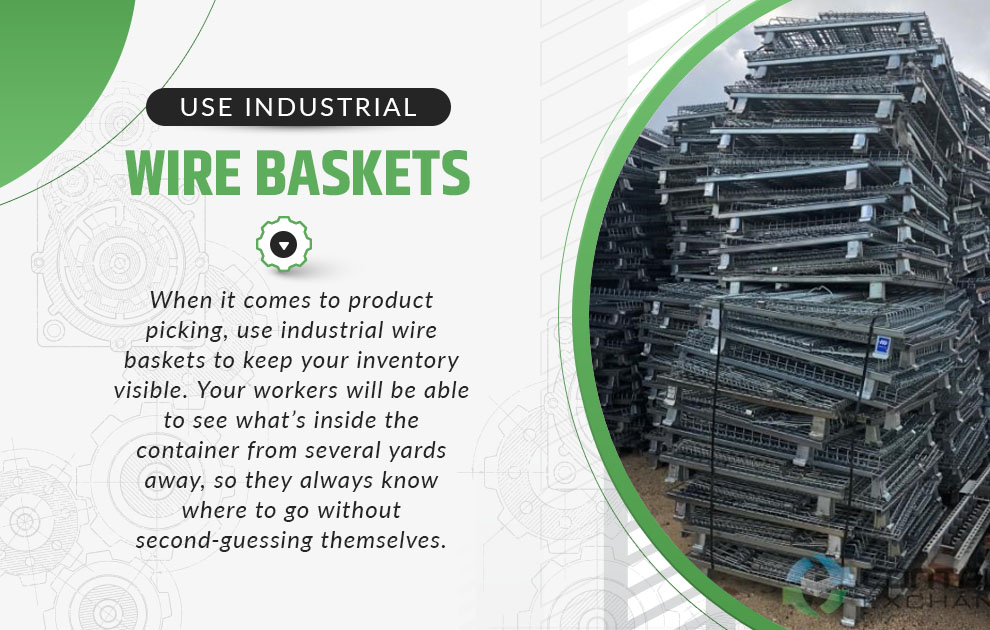Why move something by hand when a robot can do it? That’s the beauty of pick and place robots, the secret to success for any warehouse. The global market for these machines is expected to reach $3,582 million USD in 2025, with a compound annual growth rate (CAGR) of 16.39 percent from 2020-2025, thanks in large part to the COVID-19 pandemic.
The coronavirus upended the global supply chain in more ways than one. Manufacturers struggled to keep their workers on site while keeping up with changing consumer demand. Technology proved to be a reliable solution in the face of a global health crisis. Instead of hiring workers to move objects and fulfill orders, companies started using machines, usually known as pick and place robots, to improve efficiency, reduce waste and maintain consistency when dealing with unpredictable situations.
If you’re new to the world of warehouse automation, discover the benefits of pick and place robots, so you can choose the right equipment for your facility.
What Is a Pick and Place Robot?
A pick and place robot is a machine designed to move objects from one place to another. Each robot is tasked with retrieving parts or inventory from a specific location. They can be configured for a range of applications and spaces, including manufacturing, sorting and product picking, while moving objects at various speeds. They complete the same set of tasks hundreds, if not thousands, of times a day, so human workers can focus on more meaningful tasks and make better use of their time and expertise. Regardless of where you’re trying to move your inventory, you should be able to find a manufacturer that can help you create a solution specifically for your warehouse.
Most pick and place robots use a robotic arm to grab the item or part in question. Various end-to-arm configurations are used to move objects without damaging them in the process. The machine automatically adjusts its grip based on the size, density and position of the product. They can move everything, from tiny parts and tools to fragile merchandise, in a matter of seconds for more efficiency and less room for error.
They are often used in the automotive, electronics, food and beverage, plastic and polymer industries. Notable manufacturers and users of this technology include PRI Robotics, Omron, Yamaha Motor and Bosch Packaging Technology, among many others.
Different Types of Pick and Place Robots
These robots come in all shapes and sizes, but most systems fall into the following categories:
- 5-Axis Robotic Arm
This robot features a five-axis arm connected to a stable base. It’s used to move objects from one point to another on a single plane, such as grabbing objects off the shelf and/or moving them from one container to another. The robot can only move the object without repositioning it.
- 6-Axis Robotic Arm
This robot features a sixth axis for more complicated tasks. Six-arm robotic systems move on multiple planes for a greater range of movement. In addition to moving the object, the arm can reposition or twist it as part of the manufacturing or assembly process.
- Cartesian
Similar to a six-axis arm, these systems move on three axes (X, Y and Z) for more location accuracy. They use robotic arms and other industrial components, such as belts, balls or screws, to retrieve items at various heights and densities. This helps you condense your storage space without worrying about whether your employees can reach the items on the shelf. When an order or command comes in, the arm quickly moves to exact coordinates on the grid to retrieve the item. These racking systems or storage areas would otherwise be inaccessible to human workers.
Order Up on Industrial Wire Baskets
- Delta
The delta system uses three lightweight robotic arms that move on four axes for quickly sorting and packing merchandise. It comes with heightened visual recognition capabilities for distinguishing between different colors, shapes and sizes. The arms can move multiple objects or fulfill separate orders at the same time as they make their way through the supply chain. The machine uses a large motor attached to a fixed surface to operate the arms.
- Fast Pick Robots
These are similar to other pick and place robots except that they usually focus on more repetitive tasks, such as “top off” picking for adding last-minute items or promotional materials to packages. They generally draw from a limited set of SKUs, so they won’t be able to traverse all your inventory.
- Collaborative Robots
Often referred to as “cobots,” these machines are designed to work in tandem with human workers for increased efficiency, special awareness and improved workplace safety. All collaborative robots must comply with the latest safety guidelines. There are many ways in which humans can interact with pick and place robots, so this is more of an umbrella category that includes the following:
Cell robots are typically concealed behind a fence or guardrail to make sure humans don’t get too close. Workers should be able to occasionally check in on the robots from a safe distance without turning off the machines or stopping production, which can cost thousands of dollars per second.
Coexistence robots do not have a protective fence or barrier, but the worker has a separate work area. The machine may come with sensors for reducing speed if a human being gets too close to the action.
Sequential collaboration robots share a workspace with the human worker. They will often complete various steps in tandem with one another. The steps are sequential to avoid any unexpected injuries.
Cooperation robots are less guided than sequential collaboration robots. Both the robot and human work on the same part or task at the same time, moving freely in any direction. The person will wear sensors and smart clothing or “skins” to help them avoid colliding with the machine.
There are also responsive collaboration robots, which respond in real-time to the human worker for seamless interactions.
Studies show collaborative robots still have a long way to go before they become the new normal in the manufacturing industry. In 2019, just 4.8 percent (18,000 out of more than 373,000) of industrial robots were “cobots,” an increase of 11 percent over 2018, but they tend to be more common in the automotive industry.
Features and Benefits
- Speed
The benefits of pick and place robots speak for themselves. Obviously, it’s much faster to have a robot pick up items than it is to have a human do it. Human employees may need a lift truck or some other tool to pick items off the shelf. This can take several minutes or more, depending on the size of your facility. Pick and place robots can retrieve these items in a fraction of the time. They are the preferred choice in high-frequency warehouses with lots of different SKUs.
- Accuracy
Increasing efficiency is a clear win for any company, but these robots can also improve inventory accuracy for more peace of mind when fulfilling orders. When manufacturing or assembling goods, your workers will always have the right part or tool at the right time for less downtime. If one of your workers brings the wrong item to the loading dock, your order might not make it out the door in time. These mix-ups can also damage your reputation in the warehousing industry, taking a bite out of your bottom line.
- Safety
Nothing could be more important than the health and safety of your employees. On one level, pick and place robots reduce your dependence on human labor, so you don’t have to have as many of your workers on site at the same time. This decreases the spread of germs and risk of infection.
These robots perform tasks that may otherwise injure your employees. Picking and sorting items can be physically demanding in more ways than one, often leading to back, joint and wrist injuries.
Collaborative robots also reduce the risk of accidents on the job. They help guide the worker during the manufacturing or assembly process for better ergonomics and less room for error.
- Storage Space
Pick and place robots will change your approach to inventory management. You no longer have to arrange your merchandise to make it accessible to your workers. Feel free to condense storage racks and containers, so they don’t take up as much room in the space. This gives your team more room to spread out. You can also cut down on your storage costs for less overhead.
Learn About the Ideal Automated Warehouse System in Our Guide
Choosing the Right Option for Your Warehouse
There are dozens of ways to put pick-and-place robots to work. It all depends on what you’re trying to achieve. Come up with a specific goal for your new system before investing in a piece of equipment.
Keep in mind, some of these robots can cost as much as ten thousand dollars, while others can be just a few hundred. You should be able to install these robots without significantly changing the infrastructure of the space to save on installation. If you plan on rearranging the space, be sure to factor in any potential costs or downtime. These machines require regular maintenance. You may need to hire a technician that can help you keep these machines operating at peak efficiency.
Once you install the robot, use an automated warehouse system to measure your success over time. You should notice a considerable dip in picking time, helping you get orders out the door as fast as possible. Set key performance indicators (KPIs) to mark your improvement. Focus on the metrics that matter most to your business before declaring these changes a success.
Do You Need Pick and Place Robots?
The goal of any pick and place system is to move inventory as quickly as possible with less room for error. You may not need a new fleet of robots to reach your goals. Consider using less expensive alternatives to increase efficiency without going into debt.
When it comes to product picking, use industrial wire baskets to keep your inventory visible. Your workers will be able to see what’s inside the container from several yards away, so they always know where to go without second-guessing themselves.
Metal storage bins are perfect for sorting and storing small metal parts and tools, such as screws, bolts, springs, shocks and motorized components.
As for shipping and transportation, use pallet containers to speed up the loading/unloading process. They fit perfectly onto a pallet for less hassle on the loading dock. A single worker can move hundreds of pounds of merchandise in just a few minutes using a forklift. Ship your merchandise in bulk to save on materials. It’s always safer to store your goods in a closed container than it is to wrap dozens of packages together using shrink wrap.
Pick and place robots may be the future of warehousing, but they’re not the right choice for every business. Medium and large businesses may be able to make use of these machines better than smaller players. They also have the resources to invest in the latest technology.
If your business is struggling to get ahead, consider changing the way you store and ship your inventory to reduce labor costs and improve efficiency. Make sure you’ve exhausted all other options before spending thousands of dollars in equipment.
If you decide to invest in pick and place robots, start small to make sure these machines are helping you work toward your goals before you invest in a full fleet. Research the latest makes and models to find the right option for your goods and processes.
Image Credits
Es sarawuth/Shutterstock.com
i viewfinder/Shutterstock.com
Engineer studio/Shutterstock.com
INORTON/Shutterstock.com
AlexGreenArt/Shutterstock.com
wellphoto/Shutterstock.com
Pand P Studio/Shutterstock.com
asharkyu/Shutterstock.com
